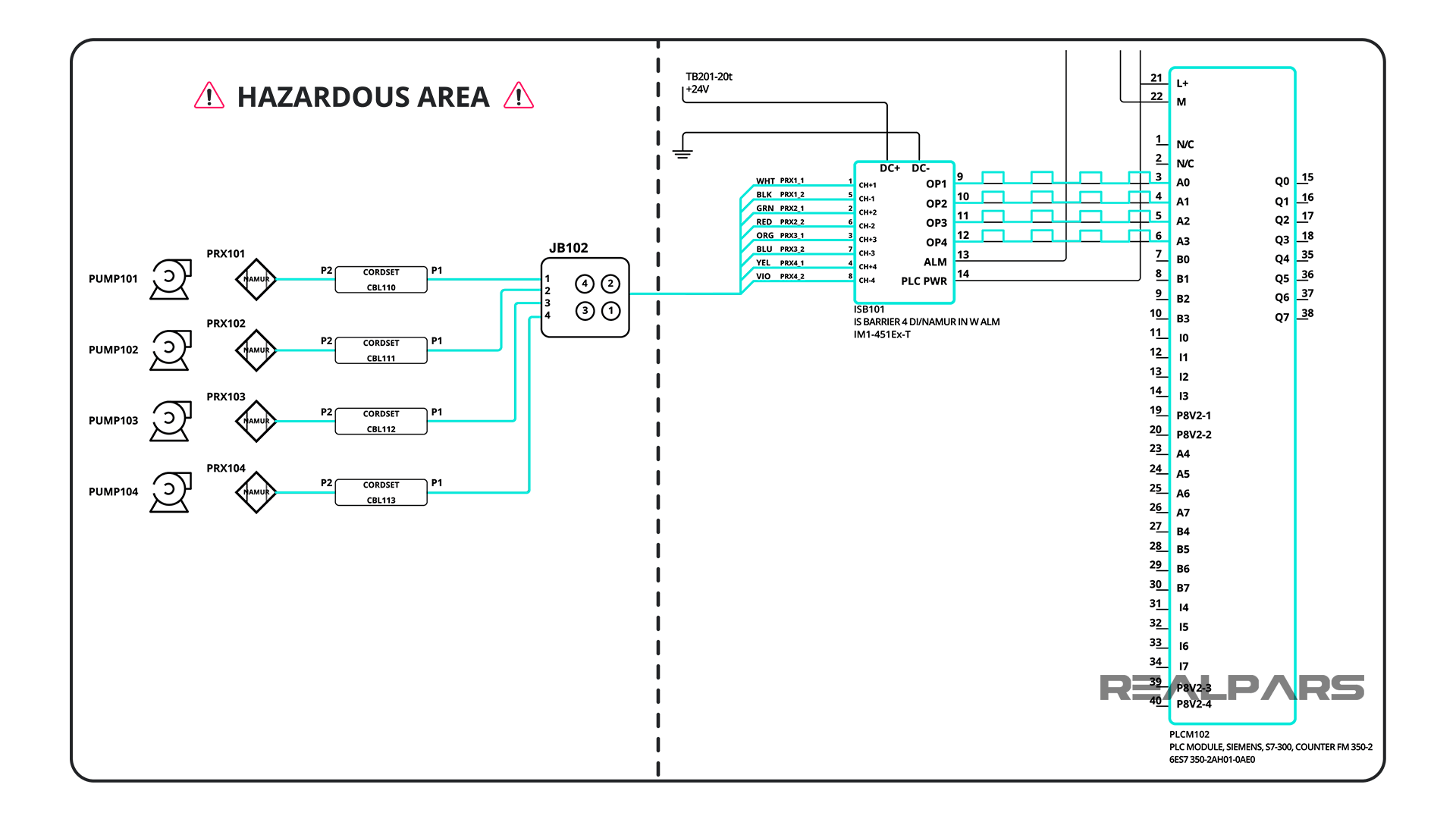What is a NAMUR Sensor?


In this article, we’re going to introduce you to a sensor called a NAMUR proximity sensor. We’re going to discuss how this NAMUR sensor differs from other proximity sensors, and we’ll show you where and why these sensors are used in the field.
NAMUR proximity sensor
Alright…. let’s go…. A NAMUR proximity sensor can be normally open or normally closed.

NAMUR proximity sensors can be capacitive, inductive, magnetic, or can be photoelectric sensors.
One could be easily fooled by assuming that a NAMUR sensor is a typical proximity sensor because they look very much alike. But physical shape and appearance are the only characteristics they have in common.

Electrical characteristics of a typical proximity sensor
Let’s begin by reviewing the electrical characteristics of a typical proximity sensor.
As illustrated in our animation, the proximity sensor acts just like a simple switch. When the target is away from the sensor, the switch is open. When the target is close to the sensor, the switch is closed.

In most industrial applications today, a proximity sensor is not connected to an actual load resistance but is connected to an input of a PLC or DCS Digital Input Module.

A proximity sensor in operation
Here’s an example of an active 3-wire proximity sensor in operation.
The PLC input will have +24 volts or 0 volts applied depending upon the operational condition of the 3-wire proximity sensor internal switch.

NAMUR term
OK….let’s move on to the NAMUR proximity sensor. The term “NAMUR” is an acronym for a very long German description:
“Normenarbeitsgemeinschaft für Mess- und Regeltechnik in der chemischen Industrie”
If you are interested in the exact description and its English translation, you can find it easily on the internet.
NAMUR sensor schematic symbol
Here’s the schematic symbol for a NAMUR proximity sensor.

The NAMUR proximity sensor has been in use for many years but like any electronic device, there are many different symbols in use.
Intrinsically Safe sensor
In a nutshell, NAMUR proximity sensors were developed to ensure safety in hazardous locations.
NAMUR proximity sensors are used in classified hazardous location areas that have explosive gas, dust, or fibers present.

NAMUR proximity sensors are considered Intrinsically Safe.
So how does a NAMUR proximity sensor ensure safety?
The NAMUR proximity sensor operates much like a typical proximity sensor but does not have an open or closed output condition. Instead, a NAMUR proximity sensor will produce two different and distinct current output levels corresponding to the target position.
NAMUR proximity sensors limit current so that the current is not capable of causing ignition in hazardous atmospheres.
Typical proximity sensors that continually make and break an output circuit could create sparks that could cause an explosion.

NAMUR sensor switching circuit
Let’s have a closer look… A NAMUR proximity sensor has a switching circuit similar to a typical proximity sensor, but instead of making and breaking an external circuit, the switching circuit is used to change the output current flow by altering an internal resistor network.
Using this technology, there are 2 output current values depending upon the position of the target.

A real-world example
Let’s take a look at a real-world example.
There are 4 NAMUR proximity sensors used to measure the shaft speed on four separate chemical pumps.
The pumps are located in a hazardous area, therefore typical proximity/speed sensors are not suitable.
The current output of each NAMUR proximity sensor is detected by an Intrinsically Safe Barrier Converter that provides a square wave pulse train to a Siemens PLC counter module.

You might want to review one of our other articles:
How to Wire Discrete DC Sensors to PLC – Part 2
Summary
OK, let’s review…
– A typical proximity sensor acts just like a simple switch. When the target is away from the sensor, the switch is open. When the target is close to the sensor, the switch is closed.
– NAMUR proximity sensors look just like typical proximity sensors
– The term “NAMUR” is an acronym for a very long German description.
– NAMUR proximity sensors were developed to ensure safety in hazardous areas that have explosive gas, dust, or fibers present.
– Namur proximity sensors are considered Intrinsically Safe.
– A NAMUR proximity sensor will produce 2 different and distinct current output levels corresponding to the target position.
If you have any questions about using NAMUR sensors, add them in the comments below and we will get back to you in less than 24 hours.
Got a friend, client, or colleague who could use some of this information? Please share this article.
The RealPars Team
Learn from Industry Experts
With a 7-day trial, then €25/month


